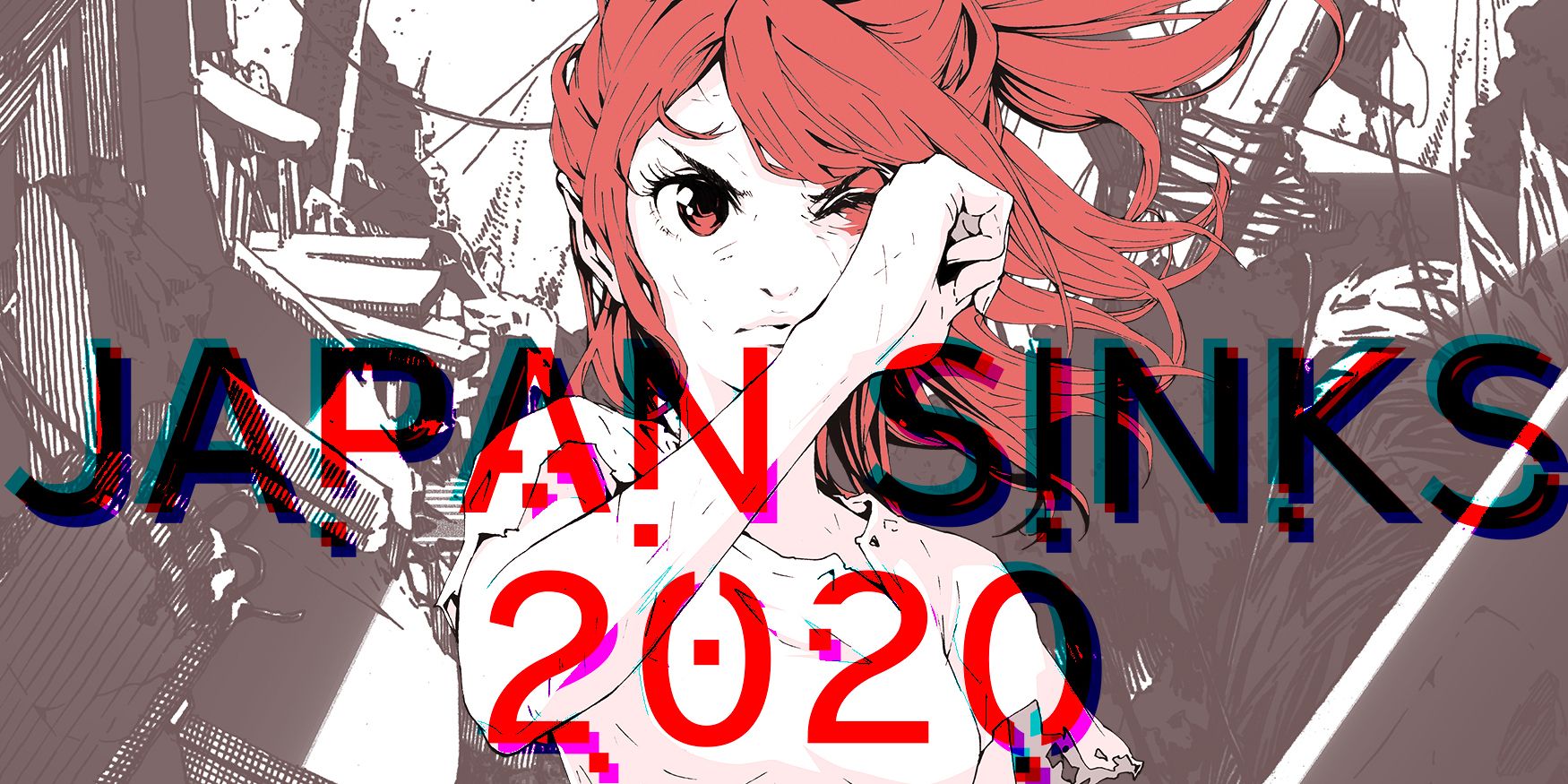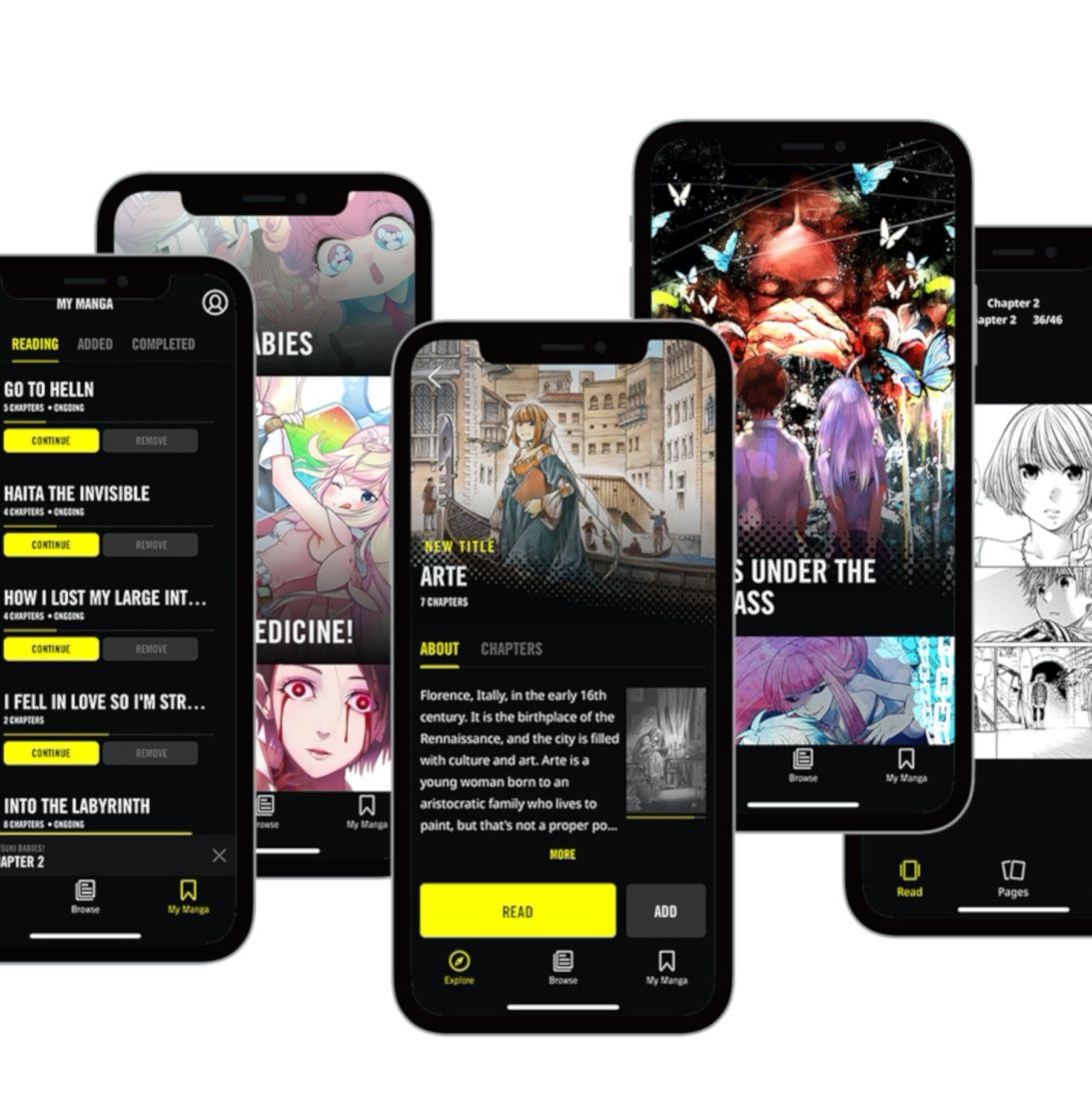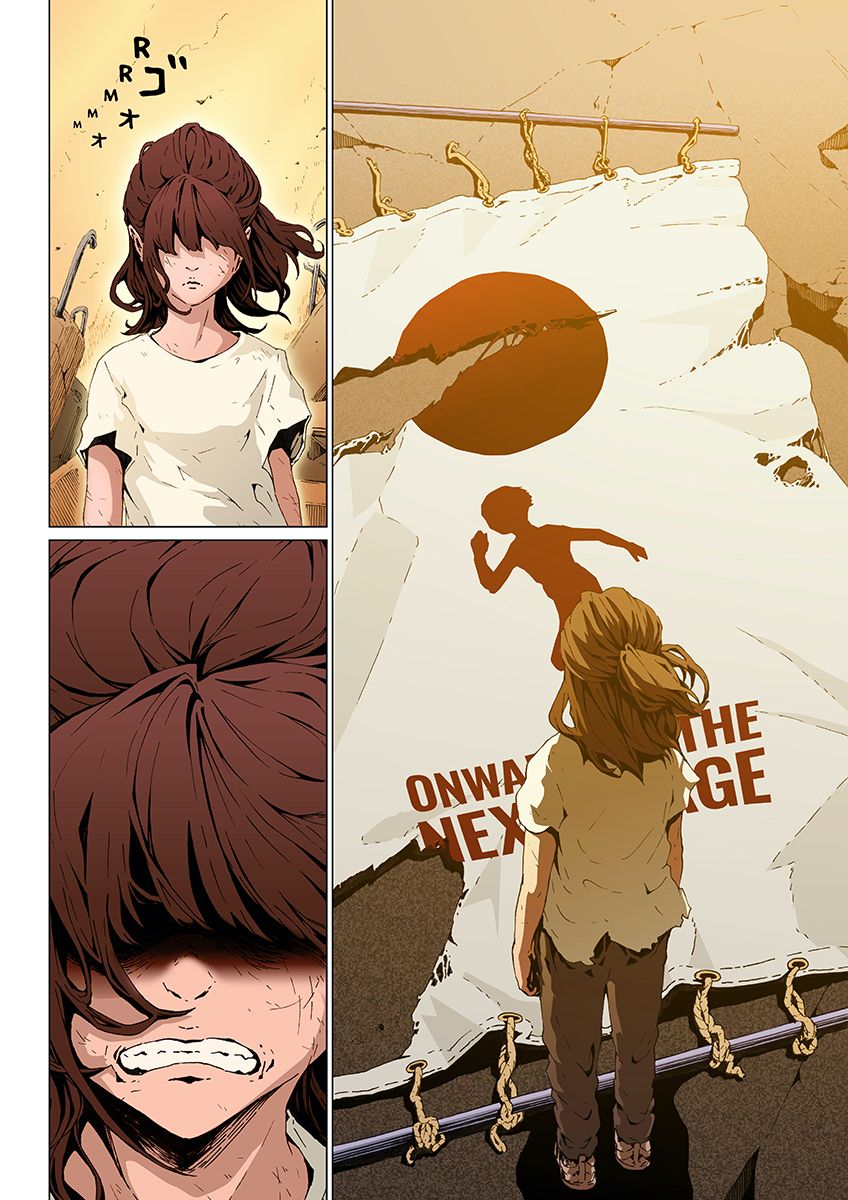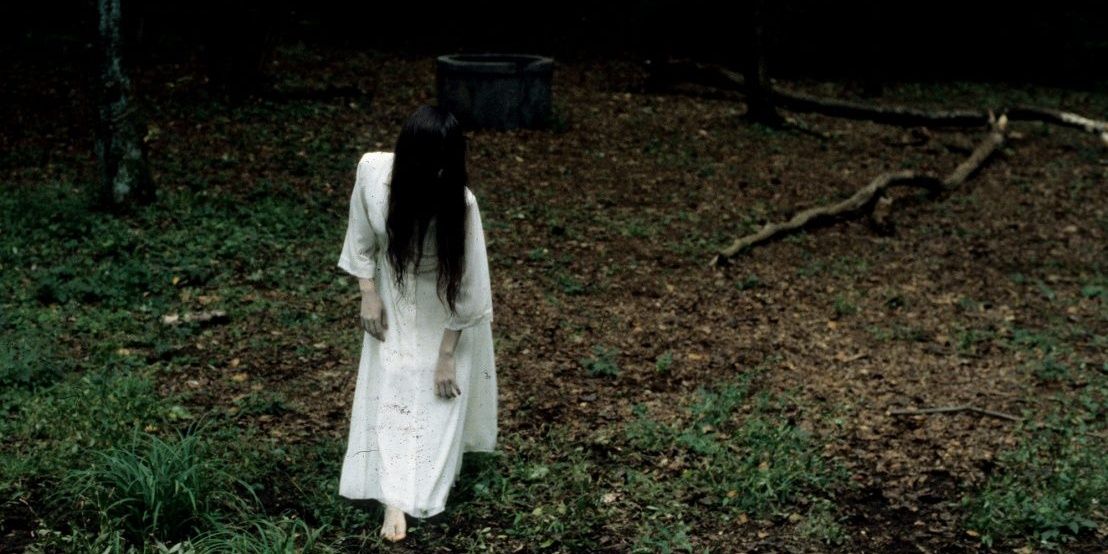Mangamo, the first mobile manga subscription service, didn't have the smoothest of launches in April. Its promise is an ambitious one: unrestricted access to an all-you-can-eat smörgåsbord of manga from multiple publishers for a monthly fee. At present, readers of digital manga have to hop between various applications and sites to get their fix of chapter updates and newly released volumes. The idea of having all of your favorite manga in a single, digital library is a dream for fans. Combatting the rampant piracy that sucks billions in both Japanese and American currency from the industry, meanwhile, is a dream for creators.
Because of this, early adopters have persisted through Mangamo's teething problems; persistence that is being rewarded with the launch of the first Mangamo Original Manga: Japan Sinks: 2020. The series is based on the Netflix anime of the same name, which itself is based on the classic 1973 novel, Japan Sinks, by Sakayo Komatsu.
Ahead of the manga and anime's joint, worldwide releases, CBR spoke to Mangamo's multi-faceted Co-founder, Nori Ueki, whose 30-year career in film and television production encompasses films like The Ring and anime like Devilman Crybaby, about the service's development, as well as the pitfalls of adapting comics into other mediums.
CBR: Mangamo is aiming to fill a big gap in the market: the world’s first unlimited, cross-publisher subscription service for manga readers around the world. As the service’s Co-founder, and, having previously worked mainly in the television and film industry yourself, can you tell me how and where the idea for Mangamo came about?
Nori Ueki: Mangamo CEO Buddy Marini has always worked to boost Japan’s profile in the global entertainment industry through technology and saw the problem of how Japanese manga is not being represented enough legally outside of Japan, resulting in a lot of scanlations and piracy.
In the anime world, which is my domain, we have seen services like Crunchyroll and Funimation giving fans a better and affordable alternative to piracy that supports the industry and the creators behind each work. Mangamo was formed by Buddy, myself, Dallas Middaugh and Yusuke Sasano to create a service that empowers Japanese publishers and manga creators in the digital space and makes great manga more affordable and accessible to people around the world.
What have been the biggest hurdles in getting Mangamo off the ground?
From the start, we have been committed to bringing you the best variety of manga at an affordable price, while supporting the publishers and creators that make great manga happen. It’s a huge challenge to consistently make the value our customers receive ever better so that we can support the industry even more. But this joy of increasing our value to our customers and our creators is what keeps us going every single day.
Currently, Shueisha’s Manga Plus, Viz Media’s Shonen Jump app, Crunchyroll and Comixology are among the main ports of call for consumers of digital manga. How does Mangamo aim to stand out from the competition?
Mangamo is clear about what we offer: $4.99/month for unlimited access to all of our growing library of manga titles. We offer the most manga titles, premium reader and tracking features, and an ad-free experience that doesn’t require additional purchases. Because we have partnerships with more than 20 publishers, we also aren’t limited to certain genres or catalogs and we’re constantly adding new manga.
I know that combating piracy is a big part of Mangamo’s mission statement. With an increase in crackdowns on scanlations sites and apps in Japan and other countries, are you hoping to capitalize on the holes that these defunct, illegal providers are leaving behind?
Definitely. Even before the crackdowns in the past few years, readers have been looking for alternatives to piracy but feel like there are no other good options that are worth paying for. We’re seeing across entertainment that audiences want to support artists and creators, and that’s true for manga, too. Plus, on top of being illegal, the translation and image quality on piracy sites is often unreliable, interfaces can be poorly designed, with spotty access to certain titles. And they have lots of annoying ads.
People want to support manga creators so they can continue to create the stories they love, but finding legal ways to read manga online that are affordable, accessible and high-quality can be difficult. Some options are narrow in their scope, unclear on how much manga is actually available to read, or vague about what you really end up paying to access titles available on the service. We want to make the experience amazing and the value super clear, and leave the customer with an expectation that the value will continue to increase in the future.
You seem to already be hitting the ground running with the launch of the Japan Sinks: 2020 manga. The anime version is due to hit Netflix around the same time and, given your work for the streaming service -- producing Devilman Crybaby and, now, the Japan Sinks: 2020 anime -- should we expect more of this kind of synergy between Mangamo and Netflix in the future?
Absolutely. But of course, these things take time to develop and produce, so it's a matter of timing.
How does the manga version of Japan Sinks: 2020 relate to the anime series? Is the manga a bit like a novelization or should fans view the two as being two distinct products?
The comic is based on the anime series. The original novel serves as the base, but please think of the anime and comic as a completely new Japan Sinks.
How will these new versions update the source material for 2020?
The 1973 novel and the anime and comics in 2020 are the same in that the country of Japan will disappear. The 1973 version focused on the activities of government and heroes. In our 2020 version, we focus on family -- where should an ordinary family with no information run away to? This is about the survival of ordinary people. However, the characters of the 1973 novel are also very well-developed, and I respect the 1973 version in various respects.
Anime fans are pretty excited for the Japan Sinks: 2020 anime thanks to the talent behind it: Science Saru and the much-beloved Masaaki Yuasa, who also directed Devilman Crybaby. How closely did you work with Yuasa on both projects? And is there something about his work that you’re particularly drawn to as a collaborator?
For Devilman Crybaby, I was pitched the project and my role was on the greenlighting side so I was not so involved in the production itself. For Japan Sinks: 2020, I was the one who proposed this idea and was deeply involved in the production, working together with the team from script development to post-production.
Director Yuasa is someone who creates a lot of ideas, and then he is good at building upon those ideas [and] incorporating the opinions of others around him, so it was great to be able to work in such a positive environment.
Do you think, following the success of Makoto Shinkai’s Weathering With You, that there’s a renewed interest in environmental disaster stories right now? What makes manga and anime good mediums to tell those stories?
I think Hollywood is the best place for live-action disaster films. Japan doesn’t have the big budgets to create live-action films, so you see the shift to produce these types of stories in anime. However, it is not a mainstream genre.
Even if you draw such disaster stories in comics or anime, it is not realistic, so there is a tendency to tone it down so that you do not feel uncomfortable even if you show the collapsed city or the injured person. It may be easier to see what is left to the imagination of the viewer, as it is possible to portray a tragic scene softly.
As well as producing manga and anime, you’ve also helped bring manga into live-action, like the Gintama movie for Warner Bros. Live-action films based on manga are a lot more common in Japan but when Hollywood has a go at doing the same thing, it tends to leave a bad taste in people’s mouths. What do you think the main challenges these adaptations have to overcome are, and what would say are the best-adapted films you’ve seen? (Japanese or American.)
I think that the failure of live-action films based on Japanese comics in Hollywood comes from overthinking various ways to adapt the material to global audiences, which results in decreasing the fun that made the original so special in the first place. I think it would be great if it was adapted together with the Japanese team.
Although it was not based on a comic book, I think the horror movie The Grudge was successful because it was made by the Japanese director who made the original. The most successful live-action version of a comic for me is Kingdom. The sequel is currently in production, and the original author of the comic participates in the script, which will surely satisfy the comic fans.
I can’t let you go without asking you about The Ring, a film you produced that I STILL have nightmares about to this day and, more importantly, helped “J-Horror” rise to greater prominence around the world. As someone who was part of it, how do you look back on its legacy?
Horror is one of the most sensitive genres. In Japan, it is said that a good story betrays expectations yet delivers its promise. The Ring, first released on TV in 1995 was exactly that pattern, the story went on one after the other, betraying expectations, and at its finale, it delivered an unimaginable ending. A television studio producer once asked me, “Do you think you can adapt this original novel into a motion picture?” That producer is now the president of the TV station. It was an interesting novel for him, but he called on me to discuss if it could be adapted to television. I worked with the conviction that you can create an interesting story regardless of media, whether TV or theater.
I think that the combination of high-tech equipment of that era and classical horror subjects can still be applied as an idea. The Ring was a combination of "VHS tape dubbing" and "chain letters." Since then, we’ve had email, mobile, Siri and Alexa, perhaps we may have some thoughts. It was after producing The Ring that I got in the habit of always thinking about such things. I'll think of some interesting ideas next. Look out for the next one to become a Mangamo Original Manga soon.
Finally, is there anything you’d like to add about Mangamo? What else we can expect from the service soon?
Mangamo is offering a 30-day free trial for new users and will be adding new titles constantly, so stay tuned!
From director Masaaki Yuasa (Devilman Crybaby), the first anime adaptation of the bestselling science fiction novel by Sakyo Komatsu, Japan Sinks: 2020 is available for streaming on Netflix.
From author Kenichi Watanabe, the Japan Sinks: 2020 manga is available on the Mangamo app. New chapters will be released weekly in July and bi-weekly thereafter. The manga was created in partnership between Mangamo, Comicsmart and Avex.




